ما هي الصلابة؟
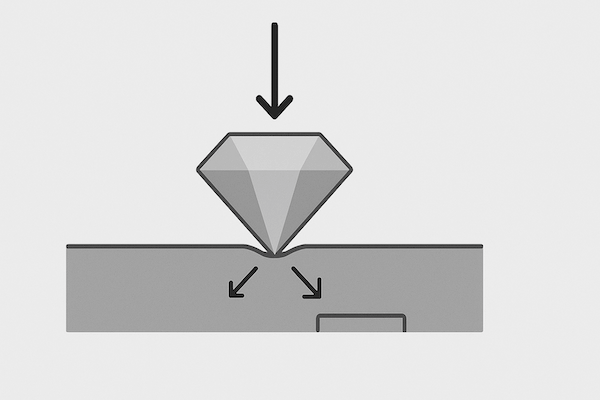
الصلابة هي مقياس مقاومة المادة للتشوه الدائم، وخاصةً الانبعاج أو الخدش أو القطع. عمليًا، تصف الصلابة مدى قدرة المادة على مقاومة القوى التي تحاول إحداث انبعاج أو خدش أو تآكل.
الصلابة ليست قيمة مطلقة واحدة، بل تختلف باختلاف طريقة الاختبار المستخدمة. تشمل اختبارات الصلابة الشائعة ما يلي:
فيكرز (HV) - تستخدم أداة ثقب هرمية ماسية
روكويل (HRA) - شائع في تصنيف كربيد الأسمنت
برينيل (HB) - يستخدم للمعادن الأكثر ليونة
مقياس موس - مقياس نوعي من 1 (التلك) إلى 10 (الماس)
يحتل كربيد التنغستن عادة مرتبة عالية للغاية على كل هذه المقاييس، غالبًا بالقرب من 1500-2000 HV أو 88-94 HRA.
لماذا تعتبر الصلابة مهمة؟
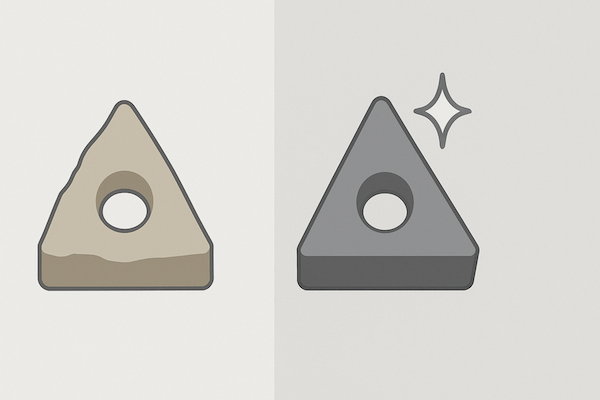
في البيئات الصناعية والتصنيعية، تؤثر الصلابة بشكل مباشر على كيفية عمل الأداة:
يقاوم التآكل الناتج عن التآكل أو ملامسة الأسطح الخشنة
يحافظ على دقة الأبعاد على مدار الاستخدام لفترات طويلة
يتحمل ظروف الضغط العالي والحرارة العالية دون تشوه
ل أدوات القطع الكربيديةتضمن الصلابة بقاء الحواف الحادة سليمة. أما بالنسبة للأجزاء المتآكلة، فهي تضمن تآكلًا سطحيًا أقل وعمرًا أطول.
صلابة كربيد التنغستن (كربيد الأسمنت)
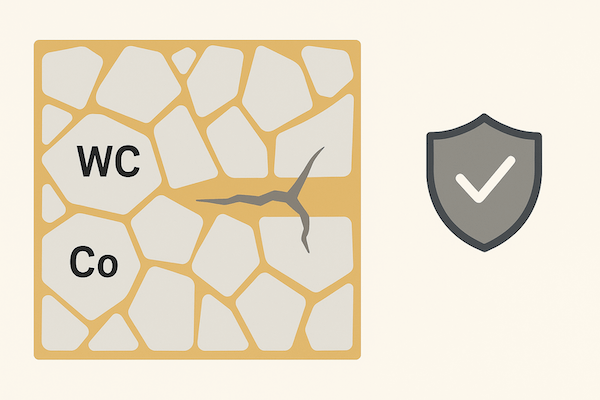
كربيد التنغستن هو مركب المواد المصنوعة من:
حبيبات كربيد التنغستن الصلبة (WC)، و
مادة رابطة معدنية، عادةً ما تكون من الكوبالت (Co) أو النيكل (Ni)
توفر حبيبات WC صلابة شديدة، في حين أن ملف العروض صلابةيؤدي هذا المزيج إلى إنشاء كربيد أسمنتي، وهو صلب للغاية ومتين نسبيًا - مثالي للأدوات.
نطاقات الصلابة النموذجية:
| درجة | محتوى الكوبالت (%) | الصلابة (HRA) |
|---|---|---|
| واي جي 6 | 6% | ~91.5 – 92.5 |
| واي جي 8 | 8% | ~89.5 – 91.0 |
| واي جي 20 | 20% | ~85.0 – 87.0 |
بشكل عام، كلما انخفض محتوى المادة الرابطة = زادت الصلابة، ولكن مع انخفاض الصلابة.
ما الذي يؤثر على صلابة الكربيد؟

هناك عدة عوامل تحدد الصلابة النهائية لجزء كربيد التنغستن:
▸ حجم الحبوب
تزيد حبيبات WC الدقيقة من صلابتها من خلال تكوين بنية كثيفة وموحدة. تُستخدم الدرجات فائقة الدقة في القطع الدقيق والتشكيل الدقيق.
▸ محتوى المجلد
انخفاض نسبة الكوبالت يعني صلابة أعلى، ولكن بمتانة أقل. التوازن الأمثل أساسي للأداء.
▸ التلبيد جودة
يضمن التلبيد المناسب في درجات الحرارة العالية الحد الأدنى من المسامية، مما يعزز الصلابة والقوة.
▸ الطلاء السطحي
تعمل الطلاءات المتقدمة (مثل TiAlN أو طلاءات الماس) على تعزيز صلابة السطح بشكل أكبر - وخاصة بالنسبة لأدوات القطع عالية السرعة.
التطبيقات التي تعتمد على الصلابة العالية
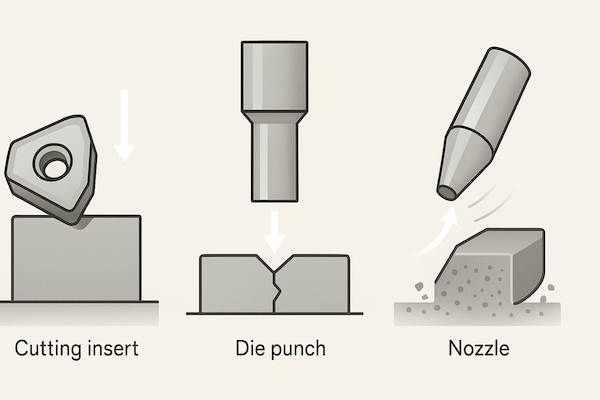
الصلابة هي خاصية مميزة في العديد من تطبيقات أدوات كربيد التنغستن، بما في ذلك:
أدوات قطع المعادن - إدراجات, مطاحن نهاية, التدريبات
أدوات النجارة - نصائح المنشار، شفرات المخطط
مكونات القالب والموت - اللكمات، القوالب، دبابيس القلب
أدوات التعدين - رؤوس المثقاب، المعاول، القواطع
في كل هذه التطبيقات، فإن الأداة الأكثر صلابة تعني عمرًا أطول وأداءً أفضل.
طرق اختبار صلابة الكربيد
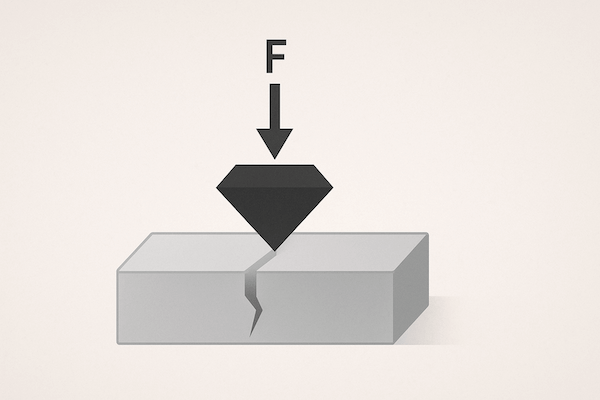
يتم اختبار أدوات الكربيد عادةً باستخدام:
مقياس روكويل A (HRA) - مناسب بشكل خاص للمواد الصلبة
اختبار فيكرز (HV30 أو HV50) - يقيس حجم الانبعاج القطري
اختبار الصلابة الدقيقة – للطلاءات والطبقات الرقيقة
يجب أن تكون العينات التي يتم اختبارها ذات سطح أملس ومصقول وسمك كافٍ للحصول على نتائج موثوقة.
الصلابة مقابل المتانة - المقايضة الكلاسيكية
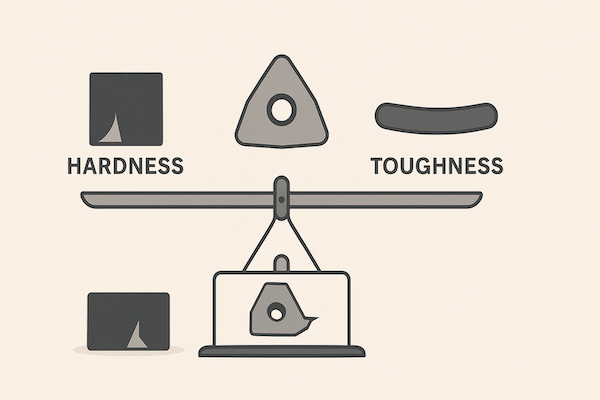
إن التحدي الرئيسي في هندسة المواد هو تحقيق التوازن بين الصلابة والمتانة:
صلابة عالية → مقاومة فائقة للتآكل، ولكن هناك خطر الهشاشة
صلابة عالية → مقاومة أفضل للصدمات، ولكن المزيد من التآكل
بالنسبة لأدوات الكربيد، يُحسّن المصنعون هذا التوازن حسب الاستخدام. على سبيل المثال:
تتطلب قطع الفولاذ صلابة عالية
تحتاج معاول التعدين إلى مزيد من المتانة
تتطلب المثاقب الدقيقة حبيبات فائقة الدقة وصلابة معتدلة
خاتمة
تُعد الصلابة حجر الزاوية في أداء كربيد التنغستن. سواءً كان ذلك لمقاومة التآكل، أو الحفاظ على دقة القطع، أو تحمل التشغيل عالي السرعة، فإن الصلابة العالية تضمن أن تلبي أدوات كربيد التنغستن المتطلبات الصارمة للصناعات الحديثة. من خلال التحكم في حجم الحبيبات، ونسبة المادة الرابطة، والطلاءات، يمكن للمهندسين تخصيص صلابة الكربيد لتناسب أي استخدام تقريبًا، مما يوفر أدوات حادة وقوية ومصممة لتدوم طويلًا.
